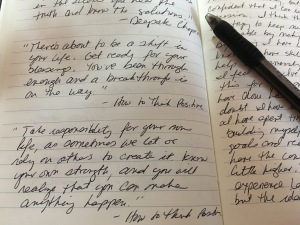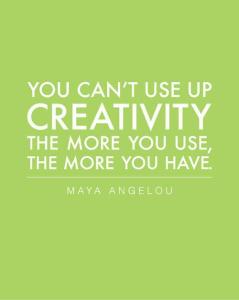Let’s face it, creativity is the bread and butter of being a writer. It’s the spark that gets the imagination going and is an essential part of coming up with something interesting to write about. It would stand to reason, then, if a writer has trouble coming up with ideas for writing, what a person really might be having problems with is creativity. This problem can be fixed by bringing out the inner child that resides in all of us.
Be a child? Oh, yes, Be a child. Act like a child. Think like a child. Why? Because children are some of the most creative individuals out there. I know this because I have a four year old and I love watching him play because his creativity is so fresh and unencumbered by the restrictions of adulthood. If I need inspiration to write or come up with new ideas, all I have to do is spend some time with my son, and every time I come away with insights I’d never considered before.
The thing what floors me is that these insights are usually so simple and obvious, but most adults (like myself) are too busy to see the simple anymore, though, it’s not just the simple, but really the incapability of looking at things from a different point of view. Sometimes creativity can be sparked just by breaking the brittle rust from our own minds and allowing us a change of view. It’s about having an open-mindedness to embrace new ideas no matter where or how they come, just as a child is naturally programed to do.
It’s a big scary world out there and it’s full of stuff that needs to be done right away. This often has a person running like crazy, or simply consumed by the day-to-day issues that hampers all adult lives. It’s no wonder with all the bill paying, job responsibilities, laundry folding, and rushing kids back and forth to school and soccer practice that the inner child disappears all together to be replaced with a mask of constant responsibility. This mask can be difficult to take off and sometimes it’s just downright inconvenient to do so. Other times, the responsibility of adulthood has consumed a person to the point of no return and the thought of being “child like” is repulsive.
When I have creativity “issues,” I have to remind myself to stop being so serious and let the mask of responsibility be put away from time to time, allowing for something that is so incredible as letting the inner child take control. It’s a freeing and satisfying thing to let happen, and it can do wonders for a mind of stone. Letting the inner child time to play, will loosen up that stone, which will then, morph into a waterfall of ideas that may even be difficult to contain.
Need some ideas on how to access your inner child? Swing in that swing on the playground, dance in the rain, build a sandcastle, eat ice cream with gummy bears, and if you don’t have a child, then borrow one. Get down on their level and play for awhile. If you’re like me, you’ll be amazed at what you discover, and might find yourself inspired to do something never before considered. Just make sure to keep a notebook handy to write down the sparks of creativity, as you let the inner child play.



